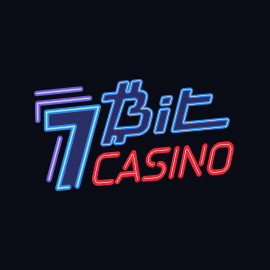Crash games are the adrenaline junkies of the online casino world. They’re fast, they’re exciting, and they offer a chance for quick wins. But what exactly makes them tick? To truly understand crash game performance, you need to get familiar with two key concepts: RTP (Return to Player) and volatility. These factors don’t just influence how much you win but also how long you can keep playing without emptying your wallet. So, let’s break it down and see how a higher RTP can make all the difference.
Understanding RTP (Return to Player)
RTP, or Return to Player, is a percentage that indicates how much of the total money bet on a game is expected to be paid back to players over time. For example, a game with an RTP of 96% will return $96 for every $100 wagered, on average.
How RTP Is Calculated
RTP is calculated based on the outcomes of millions of game rounds. It’s a theoretical number that provides a long-term expectation of returns but doesn’t guarantee short-term results.
Importance of RTP in Crash Games
Impact on Game Duration
Higher RTP means more of your bets are returned to you, extending your gaming sessions. This allows for more playtime and increases the chances of hitting a big win.
This is a simplified example to give an idea of how higher RTP can extend gaming sessions.
Assumptions:
- Starting bankroll: $100
- Average bet size: $1 per game
- For simplicity, we assume RTP directly influences the number of games playable without considering volatility or other factors.
| RTP (%) | Effective Return per Game ($) | Net Loss per Game ($) | Bankroll Depletion Rate | Estimated Number of Games |
|---|---|---|---|---|
| 90% | $0.90 | $0.10 | Fast | 1000 |
| 92% | $0.92 | $0.08 | Moderate | 1250 |
| 94% | $0.94 | $0.06 | Slower | 1667 |
| 96% | $0.96 | $0.04 | Slow | 2500 |
| 98% | $0.98 | $0.02 | Very Slow | 5000 |
| 99% | $0.99 | $0.01 | Super Slow | 10000 |
| 100% | $1.00 | $0.00 | No Loss | Infinite (Theoretical) |
Explanation:
- RTP (%): The percentage of total wagered money that a game returns to players over time.
- Effective Return per Game ($): The amount returned to the player on average per game.
- Net Loss per Game ($): The average amount lost per game after considering RTP.
- Bankroll Depletion Rate: Describes how quickly the bankroll will deplete based on RTP.
- Estimated Number of Games: The approximate number of games a player can play before depleting their $100 bankroll, based on net loss per game.
Higher RTP results in lower net loss per game, allowing you to play more games with the same bankroll, thus extending the gaming session duration and increasing the chances for potential wins.
Payout and Its Correlation With RTP
Let’s create a table that illustrates how different RTP percentages and multipliers affect the chances of winning in a crash game. This table will show hypothetical multipliers and the corresponding RTP, along with the estimated chances of hitting those multipliers.
Assumptions:
- Higher multipliers generally have lower chances of being achieved.
- The RTP represents the long-term expected return to the player.
- The table simplifies the relationship for illustrative purposes.
| RTP (%) | 1.01x Multiplier | 1.5x Multiplier | 2x Multiplier | 5x Multiplier |
|---|---|---|---|---|
| 90% | 89.11% | 60% | 45% | 18% |
| 92% | 91.09% | 61.33% | 46% | 18.4% |
| 94% | 93.07% | 62.67% | 47% | 18.8% |
| 96% | 95.05% | 64% | 48% | 19.2% |
| 98% | 97.03% | 65.33% | 49% | 19.6% |
| 99% | 98.02% | 66% | 49.5% | 19.8% |
| 100% | 99.01% | 66.67% | 50% | 20% |
The Return to Player (RTP) percentage plays a crucial role in determining the winning potential in crash games. As illustrated in the table above, higher RTP percentages result in increased chances of winning across various multipliers, ultimately leading to the possibility of bigger winnings for players.
When examining the data, it’s evident that as the RTP percentage increases, the chances of winning each multiplier also rise. For instance, consider the scenario of aiming for a 5x multiplier: with a 90% RTP, the chance of hitting this multiplier is 18%, while with a 100% RTP, the chance increases to 20%. This trend holds true for other multipliers as well.
The reason behind this phenomenon lies in the fundamental concept of RTP. A higher RTP indicates that a larger portion of the total wagered amount is returned to players over time. Consequently, players have more opportunities to win, as reflected in the increased likelihood of hitting multipliers across the board.
In essence, the higher the RTP percentage, the more favorable the odds become for players, resulting in increased winning potential and the possibility of bigger payouts in crash games. Therefore, players seeking to maximize their winnings and extend their gaming sessions should prioritize playing games with higher RTP percentages, as they offer a greater chance of success across various multipliers.
Boosting Winning Chances
With a higher RTP, you’re more likely to see returns on your bets, enhancing your overall winning potential. This doesn’t mean you’ll win every time, but it does improve your odds in the long run.
Volatility in Crash Games
Definition of Volatility
Volatility, also known as variance, refers to the risk level of a game. It indicates how often and how much a game pays out. High volatility games have larger but less frequent payouts, while low volatility games offer smaller, more regular wins.
Types of Volatility
- High Volatility: Expect big wins, but they come less often. It’s a rollercoaster ride with significant ups and downs.
- Low Volatility: Smaller, more frequent wins make for a smoother, more predictable gaming experience.
How Volatility Affects Gameplay
| Volatility | Payout Frequency (per hour) | Payout Amount |
|---|---|---|
| Low | High | Small |
| Medium | Medium | Moderate |
| High | Low | Large |
High Volatility
High volatility crash games are thrilling and risky. You might go through long losing streaks, but when you win, the payouts are substantial. They’re perfect for players who love the excitement and have the bankroll to handle the swings.
Low Volatility
Low volatility crash games provide a steadier flow of wins. They’re less stressful and more suitable for players who prefer consistency over the potential for massive wins.
Balancing RTP and Volatility
Finding the Right Mix
The best crash games balance RTP and volatility to suit different player preferences. A high RTP with moderate volatility can offer a good mix of extended playtime and decent win potential.
Examples of Balanced Crash Games
Some popular crash games like BC.GAME Crash, or Stake Crash manage to strike this balance perfectly. These games keep players engaged with frequent wins while still offering the chance for big payouts.
Return on Investment (ROI) and RTP
Return on Investment (ROI) serves as a fundamental metric in assessing the profitability of any investment, including gaming ventures. In the context of crash games, ROI calculates the difference between the total amount wagered and the total amount won, divided by the total amount wagered. However, it’s crucial to note that in gaming, ROI is typically negative. Why? Because over time, players inevitably lose money due to the house edge.
To compute ROI, we require several initial data points: the player’s bankroll, the amount of each bet, and the multiplier at which the game crashed. With these inputs, we can determine the ROI for each gaming session.
Dependence of ROI on RTP
The cornerstone of understanding ROI lies in comprehending its relationship with RTP. RTP represents the percentage of total wagered money that a game returns to players over time. In simpler terms, it quantifies the game’s generosity by indicating how much of the players’ wagers are paid back as winnings.
Let’s delve into the dependence of ROI on RTP by examining a table showcasing the correlation between RTP and ROI:
| RTP (%) | ROI (%) |
|---|---|
| 90% | -10% |
| 95% | -5% |
| 99% | -1% |
Explanation:
- RTP (%): Represents the Return to Player percentage, indicating the proportion of total wagered money that the game returns to players over time.
- ROI (%): Represents the Return on Investment percentage, indicating the difference between the total amount wagered and the total amount won, divided by the total amount wagered. Negative values signify losses incurred by players over time.
As evident from the table, the higher the RTP, the less negative the ROI becomes. For instance, at an RTP of 90%, the ROI stands at -10%, signifying substantial losses. However, as the RTP increases, such as at 99%, the ROI diminishes to just -1%, reflecting significantly smaller losses for players.
Common Myths About RTP and Volatility
| Myths | Debunk |
|---|---|
| RTP Guarantees Wins | RTP is a long-term statistical measure, not a short-term guarantee. It shows the potential return over many plays, not immediate results. |
| High Volatility Equals High Risk Only | High volatility games are risky but can be highly rewarding. They’re not just about high risk; they’re about the potential for significant rewards too. |
Where to Find Crash Games with the Maximum RTP
In the vast realm of online slots, even a small RTP difference can greatly impact your gaming journey. But what about when this gap widens? Where can you find crash games offering the maximum RTP?
Well, your options may be more limited than you realize. Many casinos prefer standard or reduced RTPs.
Experienced online casino enthusiasts prioritize good odds and player-friendly terms. They avoid flashy promotions with hidden catches and bonuses that complicate rather than aid. If you value your money and time, these casinos are worth exploring. The decision is yours.

















